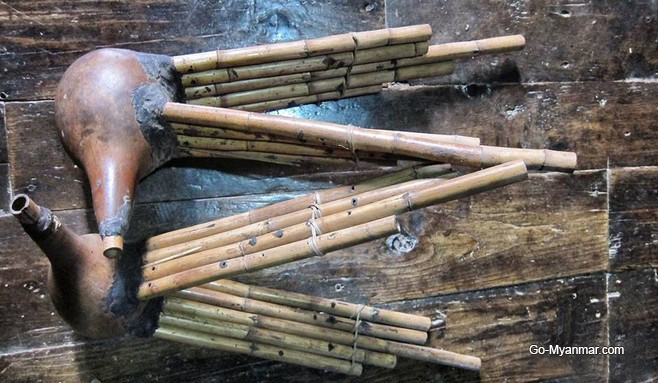Remote and mountainous Chin state has a complex history that tells a great tale. According to locals in Falam, the history of the twelve clans that surrounded the old capital has always been retained orally, through songs. In a feat of human memory, each clan had singers that would retain up to five hundred years of village history in just one song! I don’t know how long that song is, but the average person can’t remember the lyrics to their favorite three minute pop song. Such skills show an impressive song writing or listening ability.

Like valuable books, singers pass important cultural information about love, wars and life events down to the younger generations. Where I went, sadly, there isn’t much traditional music left. Maybe I needed to go deeper into Chin State to get more answers, but for now no information was forthcoming; the locals didn’t know anyone left.
When missionaries arrived they rid the local population of their animist traditions. They introduced new songs about Christianity, the English language and made the locals cover up with ‘modest’ clothing. Today the locals still write in a Roman script, and unlike most of Myanmar you can get by on English easily. The British colonial government can be applauded for putting an end to the plundering, slavery and rape consistent with inter-clan warfare, but sadly, how they did it was probably through violence. To a certain extent I speculate, but it’s safe to assume that there were no NGOs and aid organizations involved!
Today what’s left of local songs is the memories of just a few people, who have a couple learned by memory and some basic instruments for accompaniment. The instruments sound beautiful but they are the most simple you could make. Their modern music is like any other pop music, the local studio runs advanced software and makes pop that sells up and down Chin State.
But, like song birds, the locals sing everywhere they go. The songs draw you into friendships; I’ve never felt so welcomed anywhere.

The influx of foreign music shows that the locals’ instruments really don’t stand up to a lot of other musical technology. Their flute lacks the clarity of the Indian or western flute and their gongs and drums don’t have the range of a drum kit. Their sound and history is unique though, and that makes it well worth practicing and preserving, foremost for their identity’s sake. Their traditional instruments have been duly replaced in recordings by western sounds, but that’s ok, in music progress can be seen as simply being able to express emotion or thought better. The better you do this, the greater the music.
Some of their traditional songs will live on, albeit to the backing of a pop guitar riff and hip hop beat. But I also hope that someone from Chin will be inspired by our recordings and carry on playing just how they have in Chin throughout their history, or someone elsewhere will take what they hear and find new ways to mix it with other music. That way, Chin culture will deservedly live on.
Adam Nicholas, December 2014







